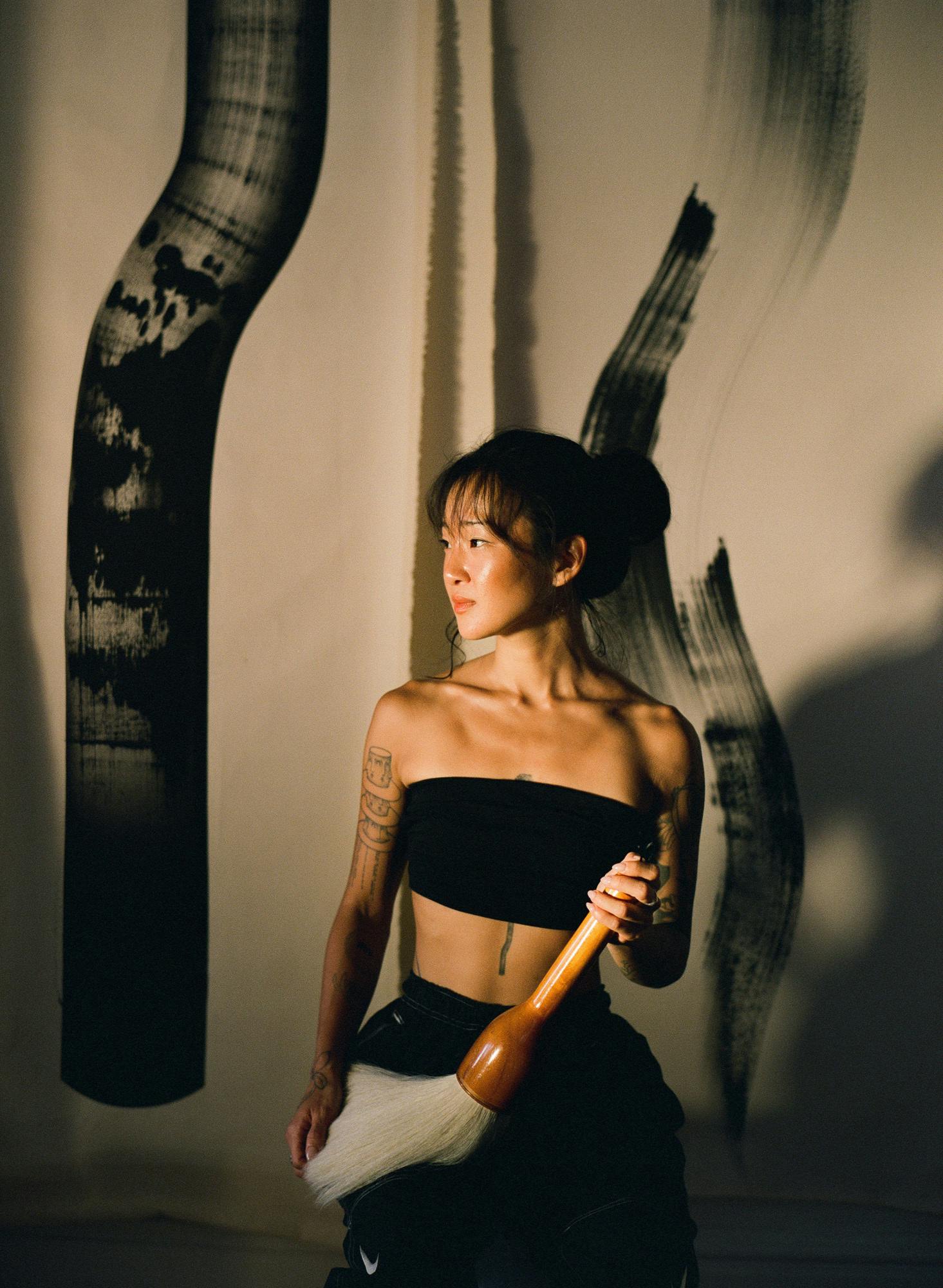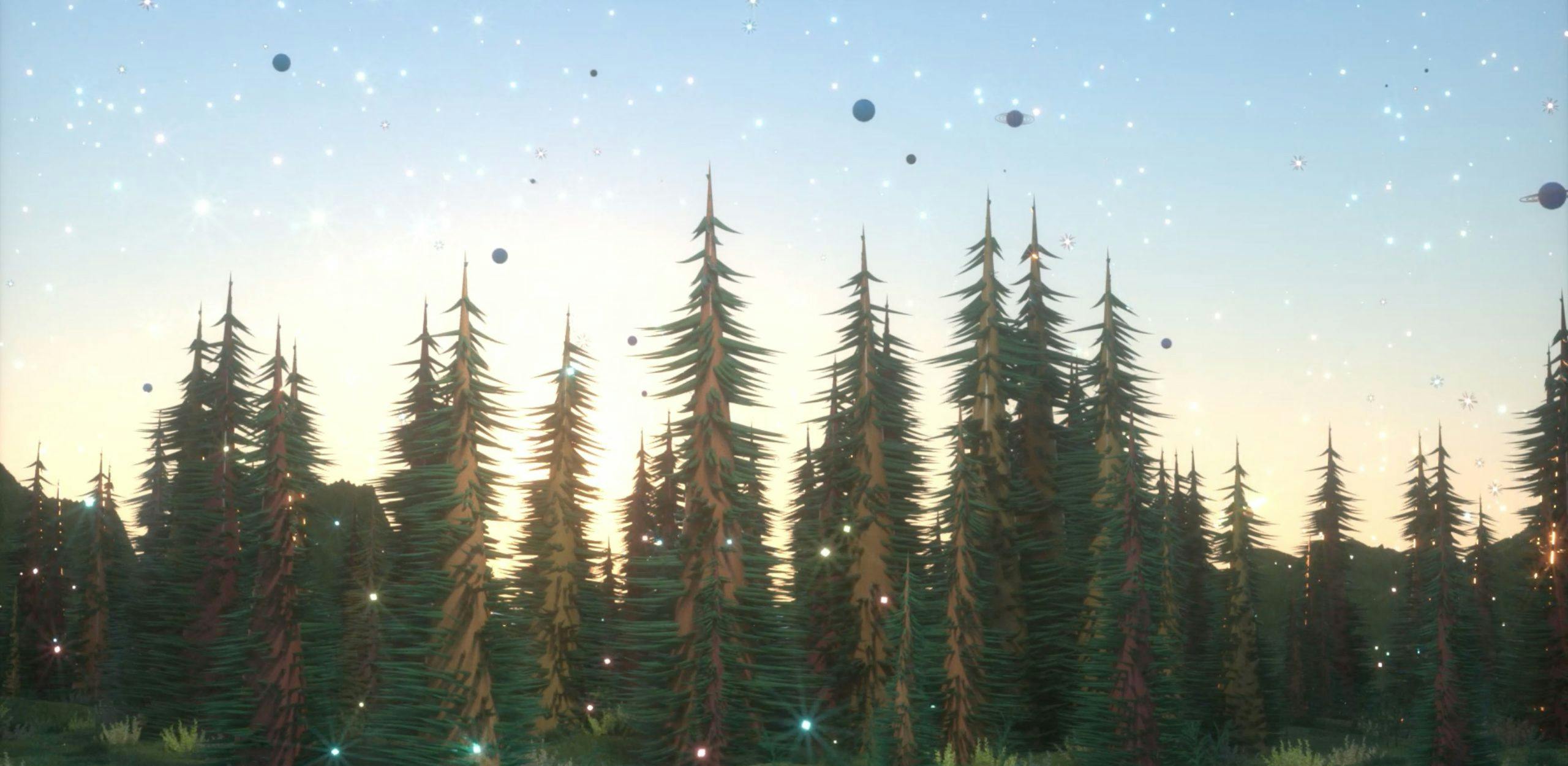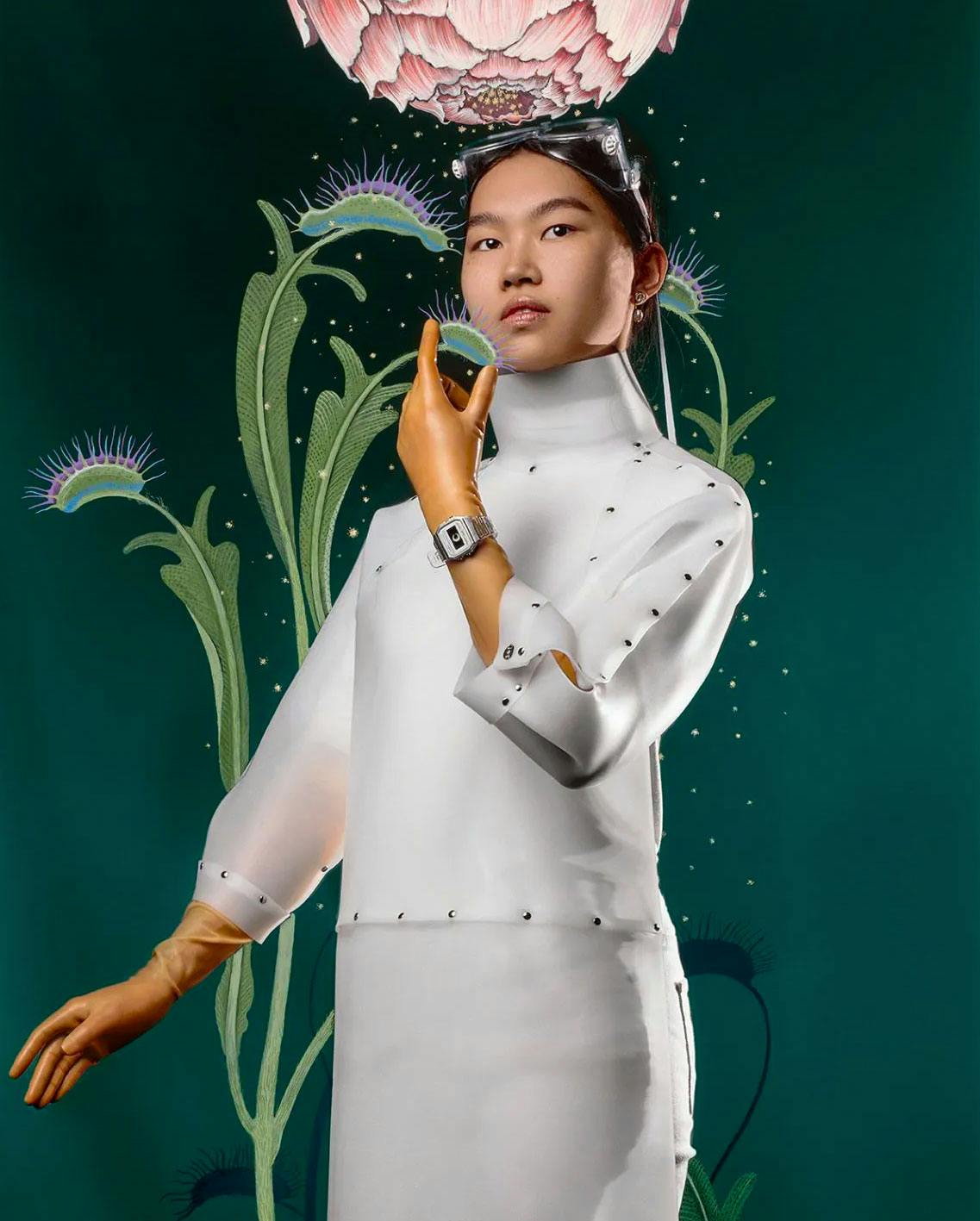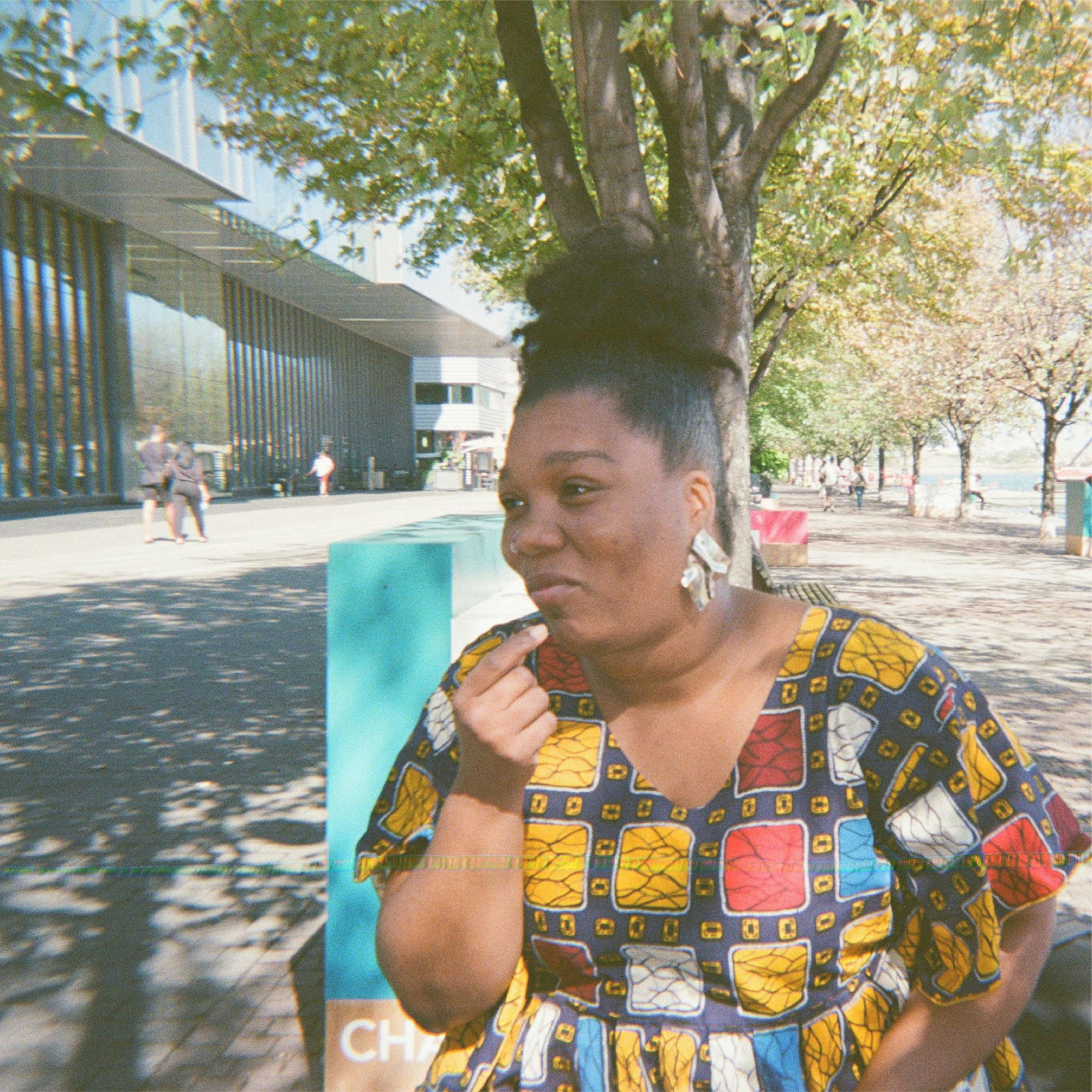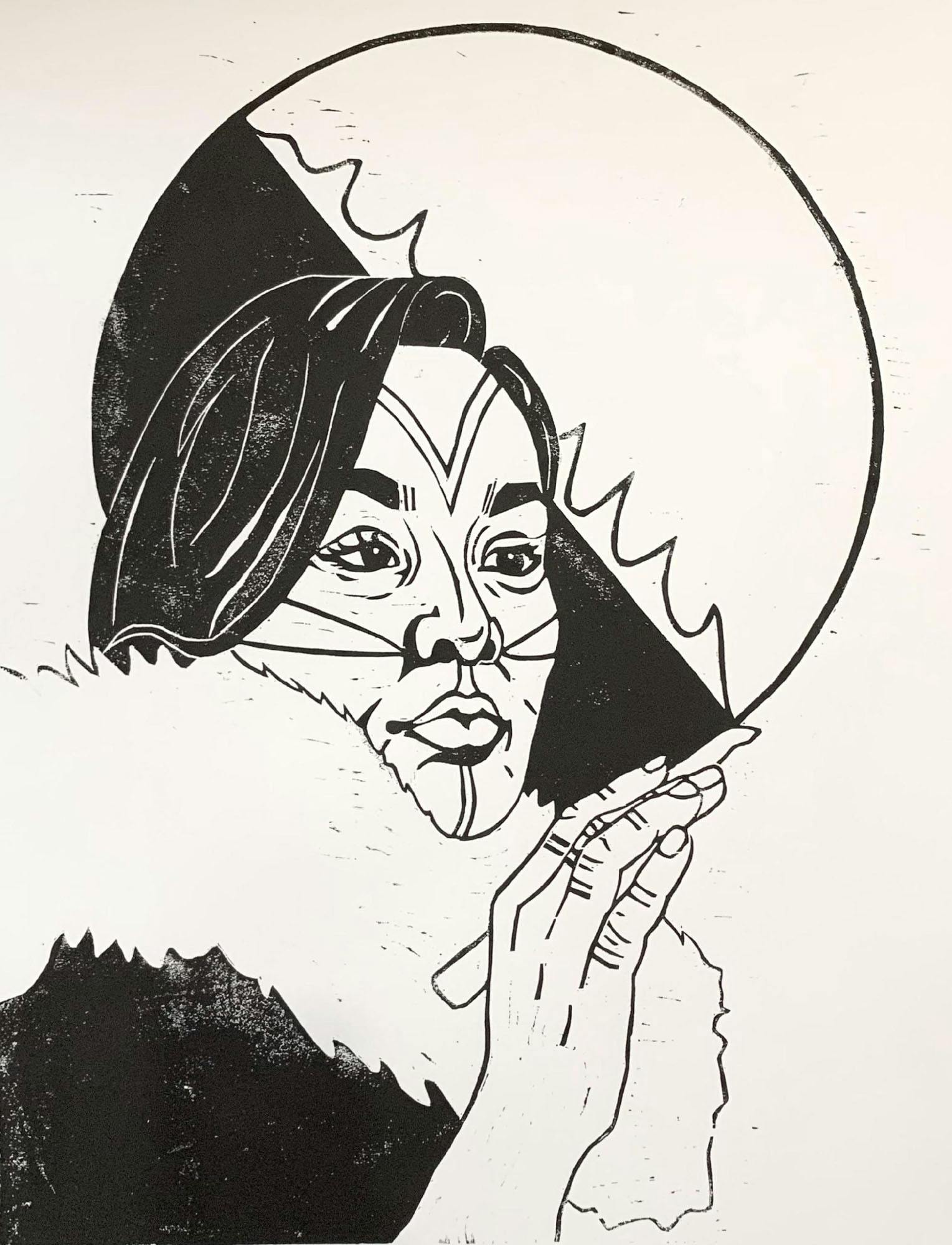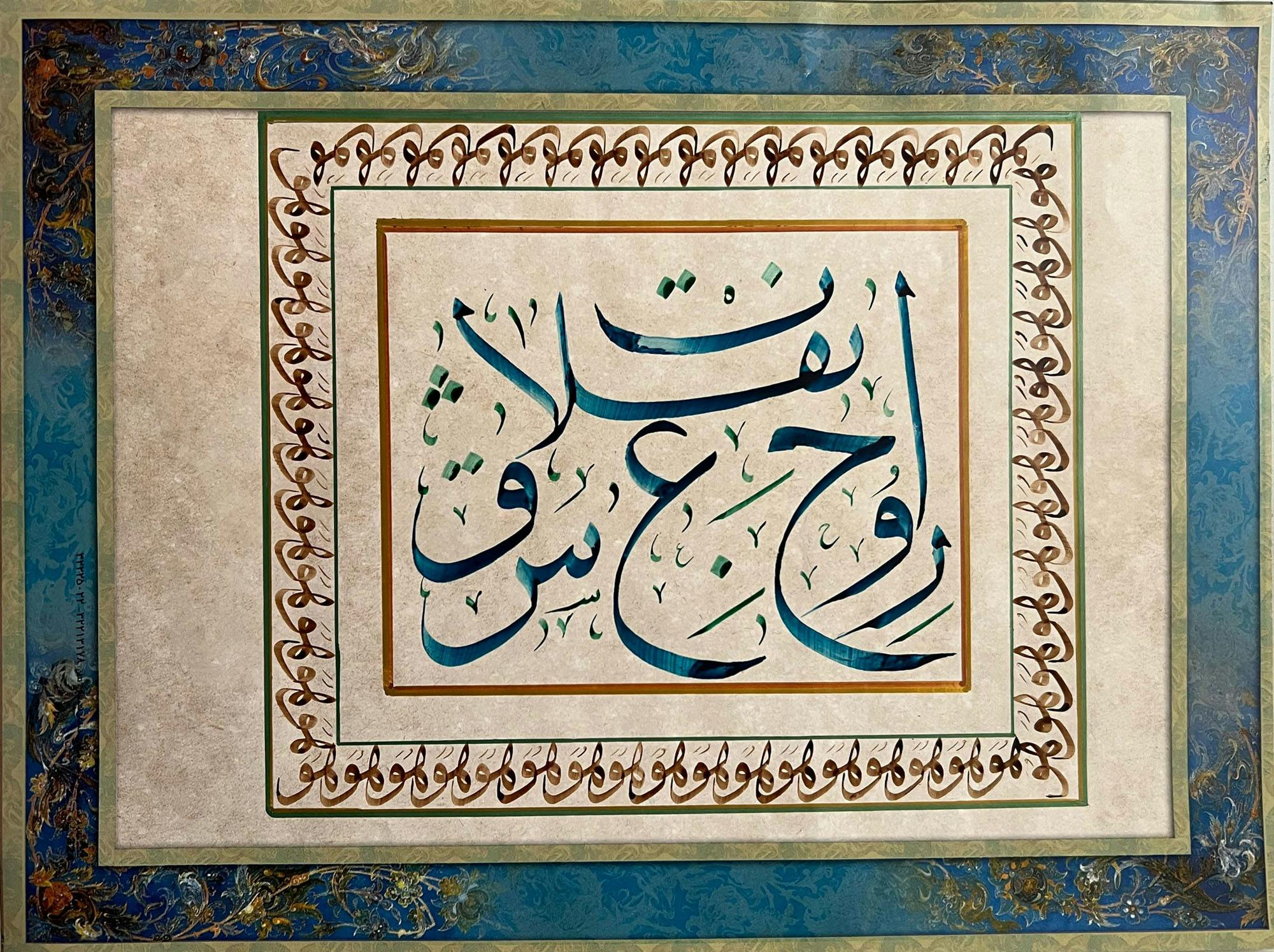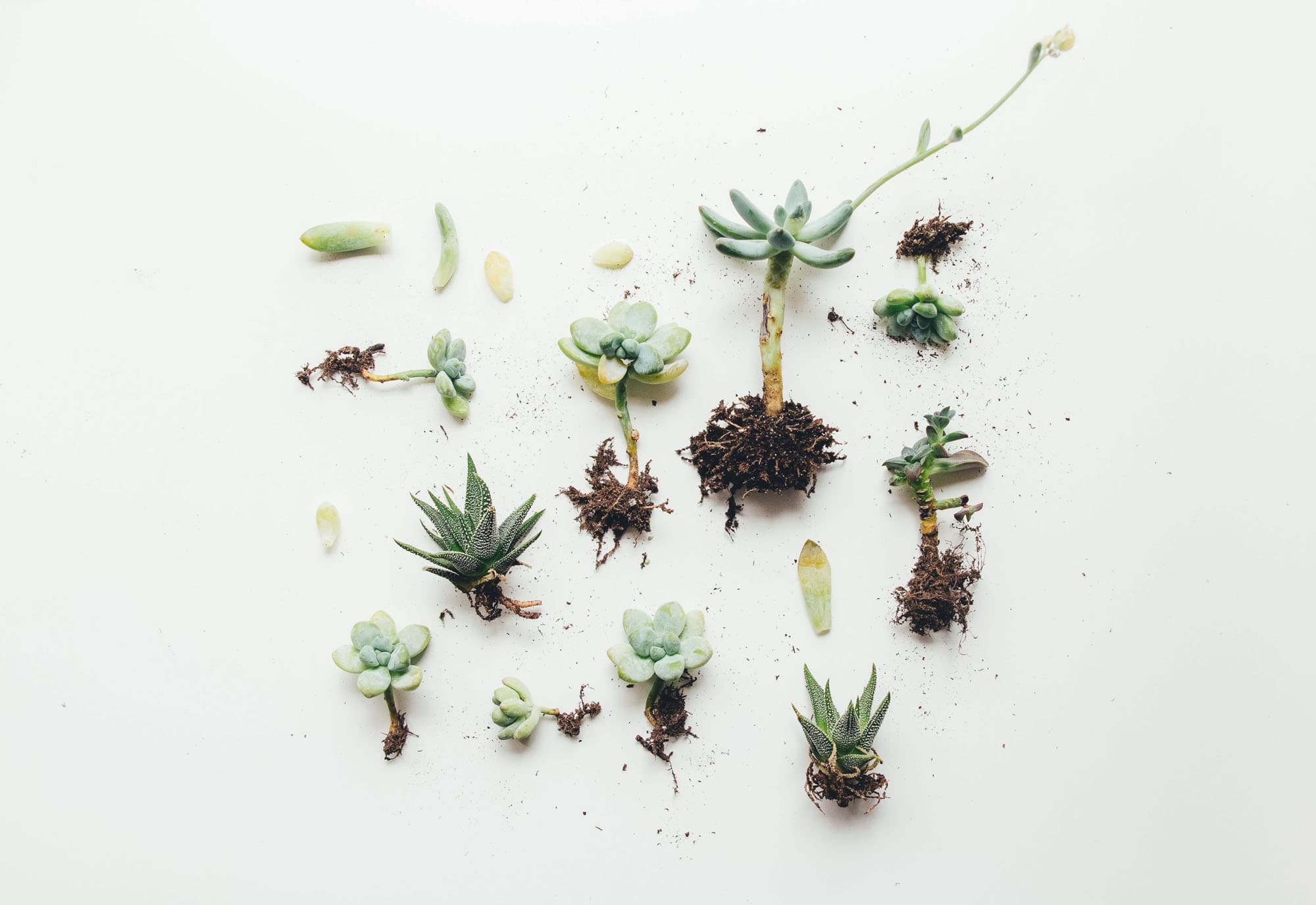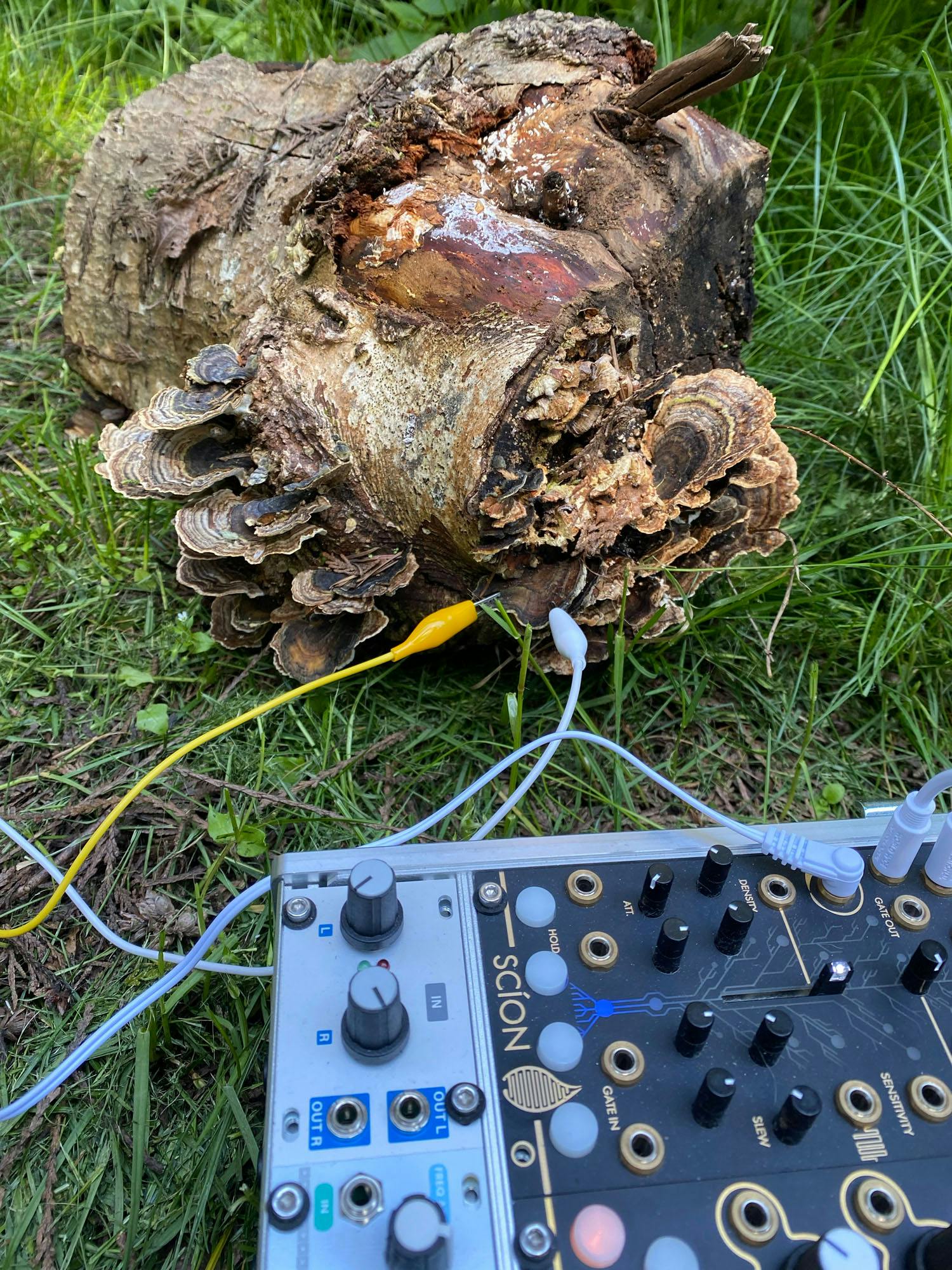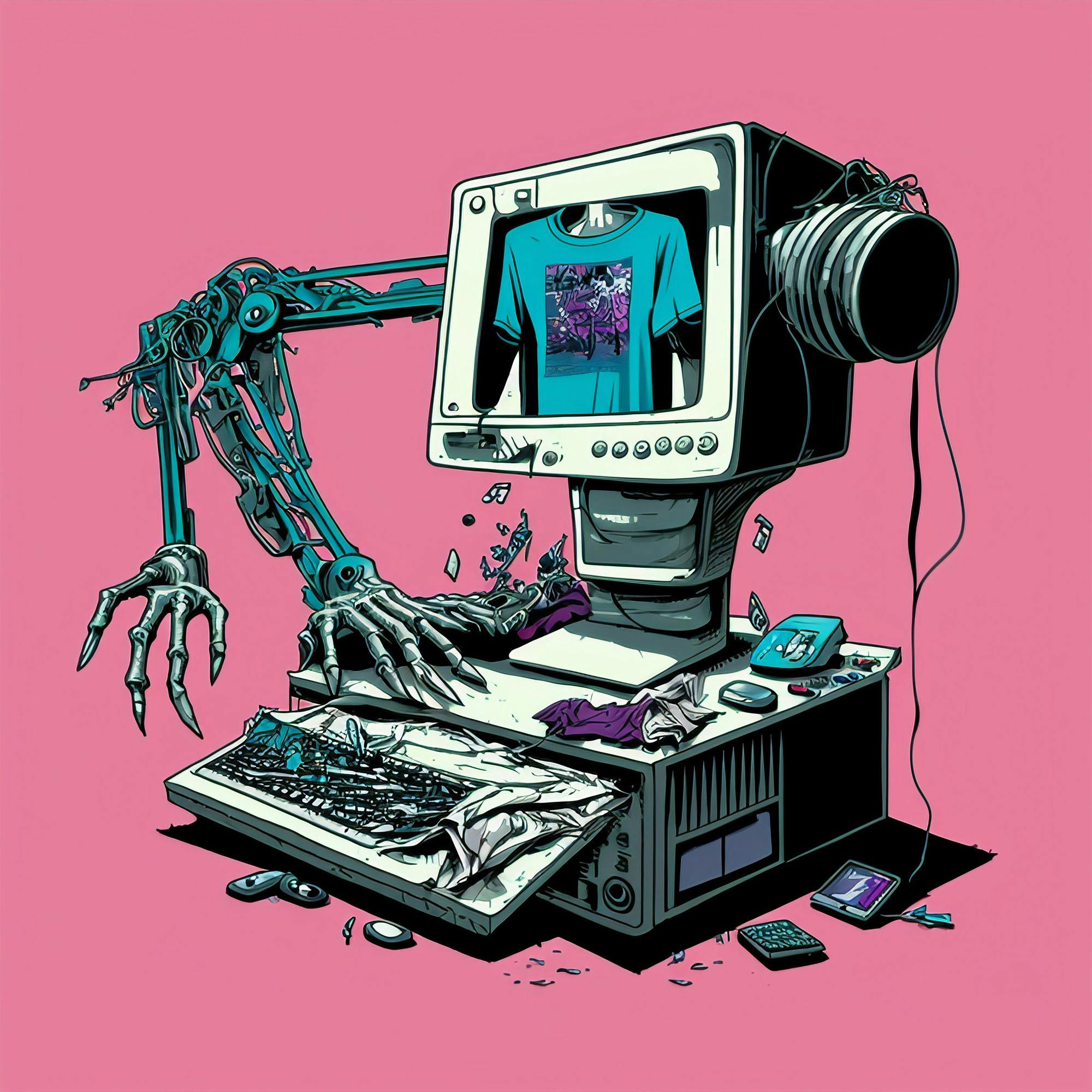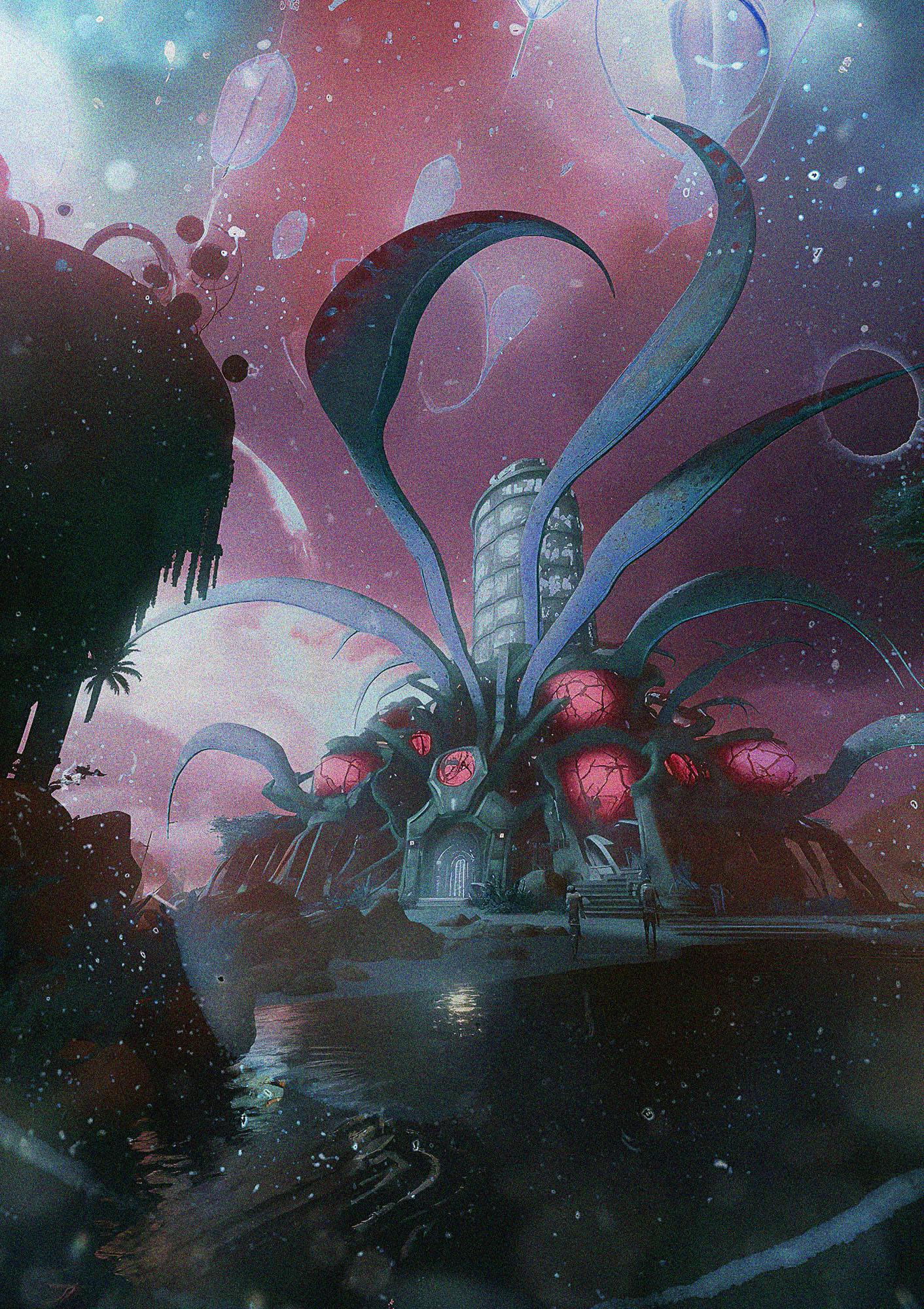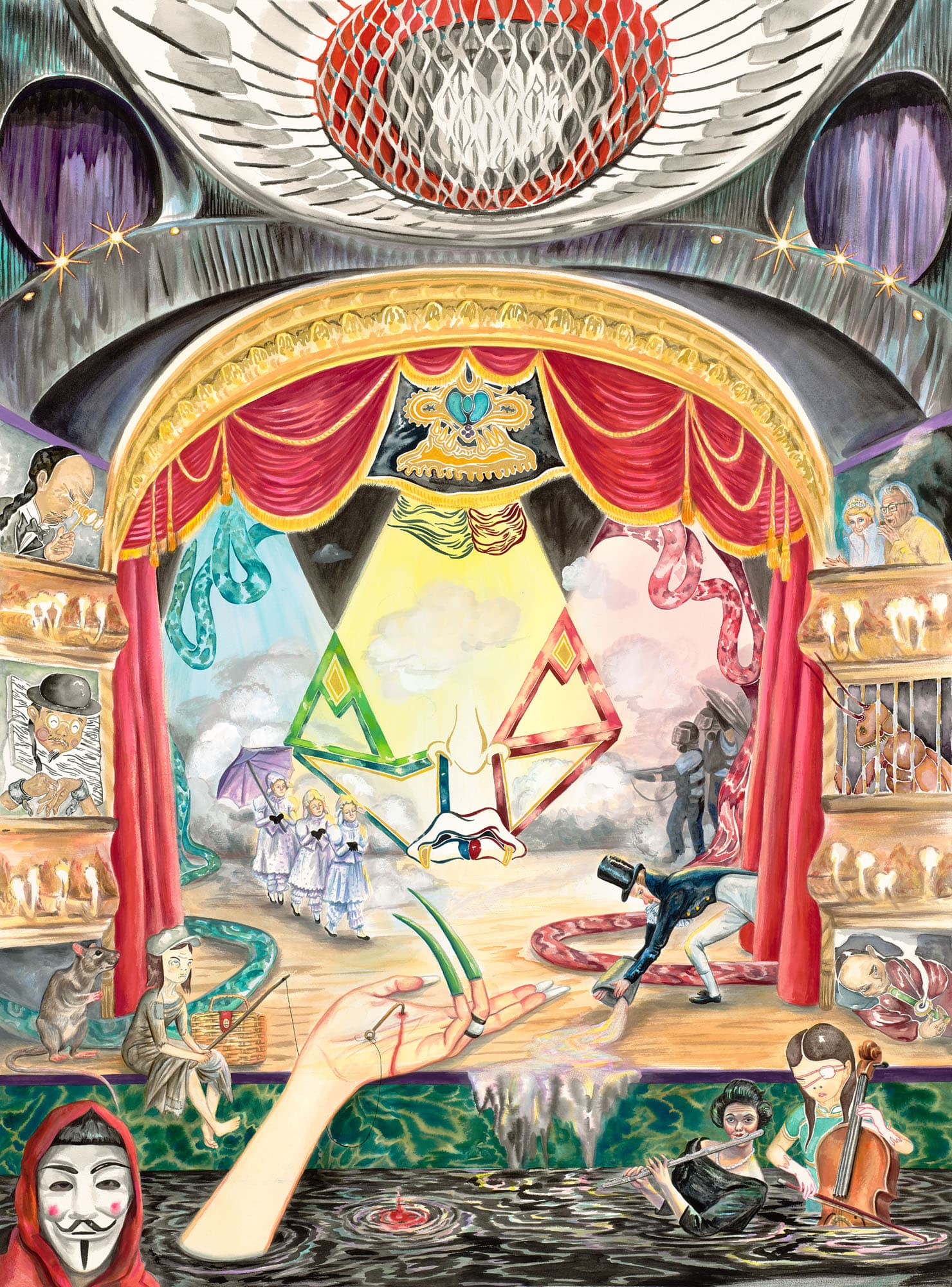
Dowagers Overture
Howie Tsui & Shary Boyle
Howie
I bought Shary’s Witness My Shame book and she X-ACTO knifed her initials into it. It was a cool little move.
Shary
Just sitting at the signing table with a knife.
Raji
That’s a cool genesis for your future relationship.
Shary
We’ve both had vantages that were never central. Our collaboration is coming out of a long history of being in the margins.
Raji
Was this opportunity to collaborate self directed or was it presented to you by the Armory Show?
Shary
We both work with Patel Brown. I was talking with Devan about the art fairs that I would be open to participating in. They had applied for a two person booth at the Armory Show and he asked me if there were any artists that might be good with my work. Howie was interesting to me. There’s an affiliation, a sympathy between our works but enough of a distinction as well that would be complementary.
Howie
Yeah, I got a message from them if I were interested and I was like, hell yeah, I’m interested.
Raji
Your website mentions that Shary is one of your heroes, Howie.
Howie
It’s a life opportunity, right? I’m sure when Shary was collaborating with Shuvinai (Ashoona) she must have been, oh my Lord, that’s an opportunity I can’t miss.
Shary
Shuvinai had never collaborated on the same paper before, because of the studio protocol up in Kinngait, and how they’ve operated since the 1960’s. No artists collaborated. I had the opportunity to observe, as an artist and outsider, how that system works when I was up there. I was looking at it with both a political and artistic lens.
I have always loved Shuvinai’s work so much, since the first time we showed works together in 2009. I travelled to Kinngait 2011, as a new friend, developing a relationship by hanging out with her every day and working alongside her in the studio. One day I asked, “would you consider collaborating on the same paper for fun?” It was completely outside of anything that she had done at the Co-Op until that point, and we had to get permission to co-create from the studio. That’s a totally distinct system from us artists in the south. I was told that, if Shuvinai gives consent then I would have to pay her what her going rate would be for whatever size drawing she would do.
I found the studio management process awkward, I was not 100% comfortable with the seeming lack of agency. But I was comfortable ensuring Ashoona’s economic situation was fully covered, if she wanted to collaborate with me. When she said yes I was given a price, like I was purchasing her half of the collaboration. So I then decided to never sell our piece, to ensure I had no future economic benefit that she didn’t share. Also because it’s an incredible work, and a reminder of a time and relationship I cherish.
Howie
Shary and I had way more freedom.
Shary
Howie and I are independent peers. And so, for me, it’s an opportunity to have a creative relationship in a self-directed way.
Howie
No bureaucracy, It was a pen pal thing.
Raji
Sikhs believe Waheguru exists within all- there’s an egalitarianism there. But there’s an interfering ego that affects living beings as we walk through earth in systems of hierarchy and oppression. With that in mind, how do two artists- with their respective creative processes- produce one artwork in harmony without an underlying hierarchical aesthetic?
Shary
I think about death. Would that mean Sikhs get to leave their ego behind when they die? This is a nice idea. I have thoughts about this question. Howie, you first.
Howie
I looked at it more practically on timelines to co-create two pieces. We decided each artist would start one and then mail it to the other. We had conversations about what imagery or themes to develop and what the work should be about. Shary was generous and open and inquisitive and curious. That’s the thing. Shary’s a sponge. She wants to learn. She made it pretty open for me to suggest something that may intersect both of our interests at the current time. That was our starting point.
Shary
Yes. There’s this other thing of egalitarianism and how to share something. It’s interesting you’ve mentioned ego.
How to have authorship and how to share authorship amongst artists is a challenge. Collaboration has a political interest for me in that two people come together as equal artists, despite our Western culture encouraging us to be individual geniuses. You have to let go of control when you share an experience like this. There’s a humility in not fully controlling that end product. That humility is an opportunity for expansion, and grace.
And there’s also just so much to learn. I learnt so much with Howie about the history of Hong Kong, and the British Empire’s colonial interferences, influences and ramifications. All of this is so complex, and was passed through Howie’s knowledge into my settler investigations into the history of British Empire tomfoolery. We both were very interested in teasing out the actual history of opium and opioid addiction that goes all the way back to the East India Company.
Howie
I was trying to share the different flavours of British colonialism with Shary. If she hadn’t tasted this colonial dish before, I thought, I’ll serve that one up. But then I was also asking these provocative questions around sentiments like how some of the Hong Kong diaspora prefer British colonial subjugation over tiger dad-style authoritarian rule. It’s picking between the two evils. I was actually trying to consider if colonialism could actually be perceived as not the total worst when compared to heavy duty straightjackets.
Shary
I’m also interested in the grey areas of these conversations. It’s crucial because we have to dig out all the real poisons of it but as we get more educated, more of these complexities unfold. Then you’re getting a fulsome picture of what’s actually happening, because there’s so much to untangle. We can’t go back… only head forward from there.
Howie
It’s filling that space between two binaries, going head to head, which is how a conversation works now, apparently.
Raji
We were all speaking about ceremonial deaths and Elizabeth Windsor dies while I’m writing the Editor’s Note. I was conflicted on whether to give space to that event. How do I shepherd this conversation that is so polarizing?
Then Mahsa Amini was killed about a week later and her death illuminated exactly the middle ground on which I wanted this publication to stand. It was in that grey. The oppressed not to become the oppressor by dancing on the grave of a dead monarch.
I guess I thought quite a bit about what we put our energy towards in thinking about a new world. For me, it was from a matriarchal, abolitionist, Sikh perspective instead of reforming this masculinist, capitalist, neoliberal world that exists.
Howie
It was an opportunity to share that story with other people that didn’t know about that history with our collaborative pieces. My interest was creating this speculative conspiracy theory around the contemporary opioid pandemic and that it is a byproduct of some form of revenge or “shame vengeance”.
Shary
As a white Canadian, I am interested in- and this may sound contentious- being a part of the conversation around histories of colonialism, the present day issues around white supremacy, and the potential hope of untangling and healing some of the root causes of these things- as major factors of where we stand now.
I believe that’s contentious because we’re at a moment in history where people feel the need to separate themselves from white folks, take care of their own communities, heal and have their voices centred. And so I, as a white person with a certain amount of platform, can be seen as inserting myself by being a part of that dialogue.
On the other hand- as a driven, passionate person- I don’t know how to retreat because there’s also the contradiction if I retreat and become silent, that exemplifies the larger problem of white power. It’s this retreat into silence by not participating in the difficult conversations and continuing on as usual behind the scenes. We need to be a part of these dialogues together. If we were to look at the micro example of a painful relationship within a family, one can’t reconcile separately. You do have to come together and have conversations, do the work together.
Art is the place where my heart and my soul lives, and my opening for communication that is going to be precious, respectful, and loving. We could do something radical in that space, if the other person is consensually meeting me there. It’s a relationship thing.
Raji
Everything you said, yes. Transmissions occur and we have to think about the responsibility of the creative practice of art making itself because it lives so beyond us. I have art around my home that I walk by every day and will have multiple interactions with them. At times, a thought will spark looking at a piece and that very thought lives in my body and I’m meditating on it for the next few months. For me, when I’m building relationships with artists, I often wonder if artists know that’s how some people interact with their work on a daily basis.
Shary
This is the best, best case scenario. That makes me happy to think of it.
Raji
Howie, do you wonder about your work and how impressions will continue moving forward beyond your physical existence?
Howie
It’s weird because my practice tends to conflate history in the present in obvious ways. So you’re talking about when I have no body and my artwork continues to exist. Then I see it sitting within this temporal line. You’d see it in the future but then it’s old or flattened. I’m interested in these temporal compressions where things are just squished together.
But in terms of feeling, I try to make a work that captures a moment for my community. You’re talking about meditating. There is a therapeutic element to the subjects in that we are visualizing these painful things as a therapeutic expression in a way…it’s a way of releasing pressure, psychic pressure within ourselves.
Raji
Repurposing/ reinterpreting an event?
Shary
In translation.
Raji
That is what Manuel Mathieu was speaking about. He takes photographs of historical events in Haiti and tells an alternative narrative through his art. There could be more tension and accountability to counter histories as written by the dominant hegemonic powers. His art resists that. It sounds like there are some similar through lines in what you just shared.
Shary
There’s a processing that happens through individual artists too. It’s taking something maybe personal that’s very complex and charged in real life- that could potentially be extremely traumatic, violent, injust- or it could be purely beautiful, having a more positive resonance- and through deep feeling, envisioning, transmission, we try to interpret and translate it through form and imagery.
You achieve that materiality through your hands, your body, or eyes, and there is something healing and hopeful about that. There’s something alchemic at work that makes it into something else. You’re a filter in a way. It’s like you’re taking some of the brutality out of it and you’re allowing it to live again through more gentle ways so that people might be able to touch something that’s hard to think about. In that touching, they can hopefully think about it in more complex ways, absorb it, comprehend it, and maybe even accept it. We have to make peace. We have to learn. And we have to move forward. There’s that.
There’s also sometimes just a straight up rallying cry where you’re screaming out something with a need to express it in a really honest way. It’s beautiful in the end because it’s a creative act we’re doing. It’s not a destructive act. It’s creation.
Howie
We’re trying to resolve something whether it’s the idea we’re interested in or our feelings about something. It feels a little bit more settled and resolved once we go through the process of producing the work. It’s less uncomfortable or itchy on the body. And then the point about us, our roles…sometimes I think of ourselves as prisms. I feel all this stuff transfers through us and then it becomes something else.
Raji
Yeah. That is a beautiful analogy.
Shary
That’s nice. A refraction.
Raji
Howie, you were talking about repatriating bones back to their native lands.
I’ve been thinking about repatriating Sikh artifacts back to India for my master’s thesis. But Sikh are fleeing India after our long history of being persecuted there and especially with Hindutva leanings of the current administration. So then where do you return our artefacts? What is home and belonging? And it’s been such a big question that me and my Sikh artists and peers are just like, where do we live? It’s not in the material.
Shary
Can I join in that conversation? It’s so interesting because we’re all seeking a sense of identity and belonging. I hear it so much from all of my friends that are of different cultures and there’s such a friction with the idea of Canadian nationalism, right? We’re all living here in Canada but almost nobody I know actually identifies as a ‘Canadian’.
Most of the close people I have in my life that are white also feel completely rootless here. They don’t feel like they are home somehow as white Canadians. Canada is not home. They feel that their ancestors came here from somewhere else. They came here because they thought they’d find a better life, like most immigrants do. Generations ago many white colonial families swallowed the Kool-Aid of this idea that they were Canadians, and now they ‘own’ Canada. Canada became their nationality. But some of their children or grandchildren are like, no, it’s not. This isn’t our place. Who the hell are we- and why didn’t you bring our traditions? And why didn’t you teach us who we are? We can’t go back. We try to go back but believe me, England, Ireland and Scotland do not want me. They do not want Shary Boyle. They don’t want me back there. I’ve gone to all those places and been like, “hey, are you guys my people?” And they’re like, “who they fuck are you? Weird colonist person from the shitty country of Canada.” You’re not technically Irish, and you’d have to go through all the immigrant hoops to try to become a citizen back in Ireland. So you’re stuck in North America. Wow. It’s such a head fuck to be ‘from’ here unless you’re Indigenous.
As children of immigrants, we’re all mixed up together here and no one belongs except for the Indigenous people, and we don’t know how to give the land back. It’s wild.

The Steamjunk Treaties
Howie Tsui & Shary Boyle
Raji
There’s a couple of responses to you. One, you must be around some great white folks that are thinking like this because there are so many people that don’t.
Shary
What kind of white people are you guys hanging out with because I hear this stuff from my friends all the time. Ha. Maybe most white people only talk to other white people about it?
Raji
Let’s just say Shary, they’re no longer people I hang out with. There was a mass exodus over COVID where I realized how many people in my circle were racist. They don’t know it. And I certainly didn’t want to continue to spend time educating them on it. So with a prayer, I released these relationships. And I had to do that a lot over the course of the last few years as we observed George Floyd take his last breaths or uproot unmarked graves of Indigenous children, or see white supremacy convoy to Ottawa.
That idea of belonging and identity is something that I think about so much. I have the privilege to reference conversations with other artists. Hungama Amiri is an artist from Afghanistan who had to show at Cooper Cole during our previous issue. We asked her this question of how she couldn’t return to Afghanistan, especially when the Taliban seized the country. She graduated from Yale and was stuck in Cambridge during the pandemic.
She said she likes living in the margins now. And I was like whoa, what does that look like because so much of what we assumed to be belonging is physical. An attempt to conceive a space of belonging that’s spiritual or metaphysical somewhere else in a different way is interesting.
Shary
The artists that are working in futurism, like yourself Raji, are actually trying to conceive what that looks like. I firmly believe that identity is land based. You’re separated from your geography, your seasons, your landscape, plants, animals, the day-to-day living specific to geography. You’re disconnected from that place and you’re disconnected from this place. We’re urban creatures and very few of us are connected with our environment and our natural surroundings. We are rootless. We are living in the margins. We’re living in futurisms and fantasies…
Howie
It is a spaceship thing. I’ve given up on this idea of feeling that I need to feel I belong somewhere or there’s actually a home. I felt that way when I frequently went back to Hong Kong. I have to double check that. It’s actually an elemental thing. It’s the smell of the sea, landscape, and the environment that made me feel extremely comforted. But since we’re here, I’m carving out my own sense of home or belonging which only exists within the parameters of my house, under this roof. And you’re trying to bring richness to it with the family and objects. We’re writing our own story or establishing your own environment. You’re floating again once you go outside and that’s why I see it as a pod…a bit of a space pod at home.
Shary
That’s a beautifully put way and often the best we can do is just make our little environments. COVID messed with us even further because we concentrated on this sense of it’s just us in our pods.
I also will flag a worry that I yearn for collectivity. I yearn for more of a connection with community and a sense of interconnectedness between people who have shared morality, ethics, values, and cultures where something can be learned and respected. Values and ethics could be shared while curiosity brings distinction amongst us. That could make us feel so much less lonely and scared?
Raji
Yeah, no, that’s a real thing. It’s been important to me to archive our existence, these dialogues, for future citizens of this new and digital world that has been designed with imperialist residue. For me, a collaboration between Howie Tsui and Shary Boyle should be written about beyond the art specifically or a Western critique of it. I was quite interested in the human experience of being reflexive and in relation. It felt important to have this conversation live for a future world that we may not ever understand or see.
Shary
Howie and I haven’t even met in the same room since we did all of this. I value this global and internet experience. We also had a beautiful snail mail part where I got to see his handwriting. This was my favourite thing because I used to be a big correspondent. We went back and forth where we broke down into the real letters. This is old school. It is the best. Irrespective of the artwork- which in the end was super interesting to share generously on the same page- we got to have conversations. I learned so much and that’s what we can put into the future.
Howie
Then circling back on your question around collaboration Raji, our collaboration was pretty comfortable. Collaboration, at times, can become a big activity that requires project management and stuff like that. It’s not a jam. We had our little orbit jam. It had some throwback vibes of good, old school collaboration, where you’re just like, we’re just gonna play in this toy box thing.
Shary
You’ve nailed that because it is almost coming out of more of a musical language than a formalized approach. It goes south when you get too formal and somehow the art world forces practitioners into these super professional- uptight practices. It’s way better to be casual and have some humour. You have to have humour. You have to have playfulness. This might suck. I might suck. You might suck. This might be a terrible combination.
It’s like that 70s TV show on PBS Kids in the Kitchen where they basically give kids ten ingredients to make something that their parents will have to eat. It’s super weird. But the kids are just in fucking chaos and they’re having so much fun. That’s how you have to approach it, like musicians jamming and improvising in creating music.
Howie
It’s sort of just throwing ideas out there and you want to see what’s going to happen. You let go of what it is or what it’s going to be. Music is so temporal and there’s this responsiveness to it.
Shary
That’s the beautiful thing about collaboration. I first started to do it with other artists, mostly musicians, so visual art wasn’t the only language. It was me responding to music and interpreting it into visual art and vice versa. We had two different languages that weren’t spoken. We were listening to each other. It was the act of closely listening, feeling and observing with the generosity of returning it to the person as a translation, of what you see and how you feel.
The music and the visuals together create a third thing that’s even better than us individually. It’s a beautiful communion. Then when I work with visual artists, it becomes more like a way of un-speaking language. It’s a game with an image and colour. A playful game that just involves care, I guess.
Howie
Game and puzzle. It’s like a puzzle design.
Shary
An improvised puzzle game where you have to be responsive and let go of your own control.
